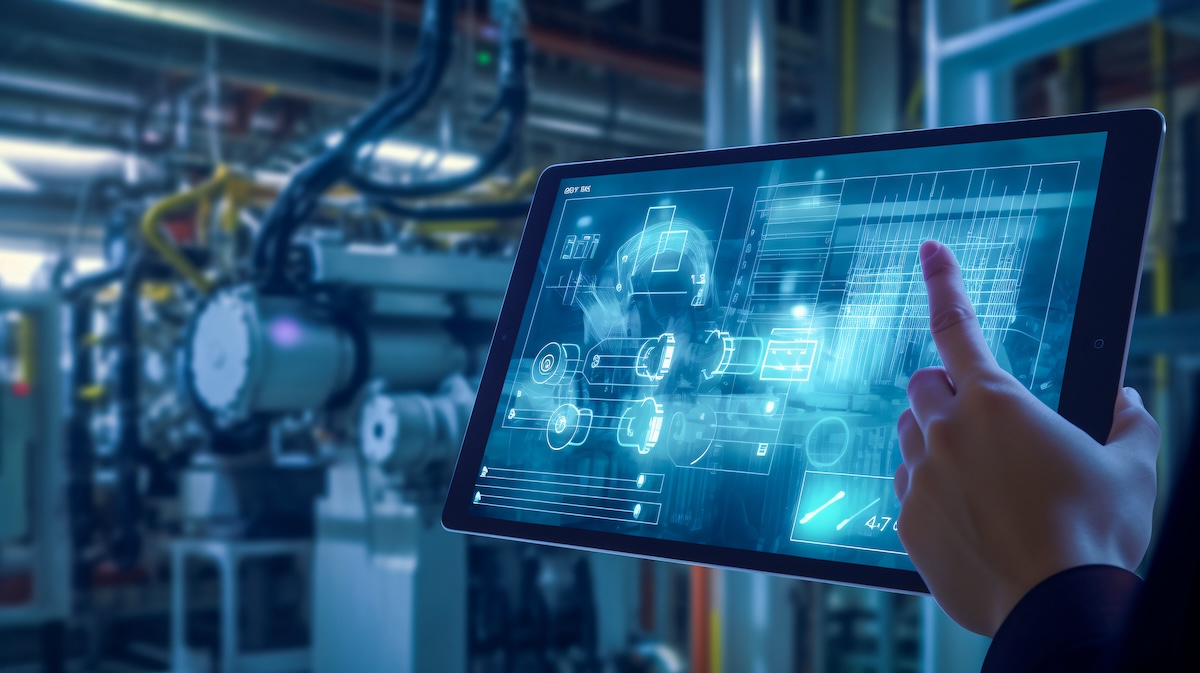The Shift to Industry 5.0 will Propel IIoT
|
Getting your Trinity Audio player ready...
|
Industry and manufacturing seem to always be in a state of transition. From manual production to machines, then on to production lines and automation, industry is continuously evolving. 2011 saw the advent of Industry 4.0, which focused on driving efficiencies, with machines and factories making intelligent decisions. Now Industry 4.0 is evolving into Industry 5.0, which involves a more holistic view of enhancing worker utilization to support higher functions, safety, and sustainability. Ultimately, the idea is that industry can enable better outcomes, efficiencies, and work environments to the benefit of people, the planet, and profit.
While factories and other industrial applications have made huge strides in terms of technology development and deployment, with predictive maintenance, robotics, and more allowing for digitization, this is now being looked at through a new lens: how industry can still achieve its efficiency and profitability goals while simultaneously accounting for sustainability initiatives – cleaner manufacturing, less resource waste, lower energy consumption – and worker wellbeing. And this is driving yet another wave of technology innovation and adoption involving access to and analysis of data. Ultimately, this is where the Industrial Internet of Things (IIoT) converges with the move to Industry 5.0 and where IIoT will come into its own.
Several requirements are bringing IoT to industry:
• The need for data, which means deploying a high volume of sensors to “see” what is happening across all aspects of industry
• The desire for privacy, in that industrial innovation can be a significant differentiator and is thus closely guarded
•The preference for solutions that do not add significant operational costs or, even better, that offer an ROI that ultimately reduces costs
IIoT has the tools today to meet all these requirements. Long-range wide-area network (LoRaWAN) technology is fit-for-purpose to support IIoT. Low-cost and easy to deploy, these networks enable the collection of massive amounts of data that support a wide range of industrial use cases to streamline operations and better manage resources, equipment, safety, and the environment.
Privacy is addressed through several attributes of the technology; it can be deployed via a variety of network types, which include public, private, community, satellite, or hybrid. This flexibility allows for coverage in remote and non-cellular areas. Industry-leading security further ensures that a company’s data remains its own.
Another benefit is that LoRaWAN deployments cost significantly less than other networking technologies. A single gateway has the capacity to support thousands of sensors, allowing it to support large campuses with several use cases deployed. As a low-power networking technology, it offers high energy efficiency, further reducing costs.
The technology can be used to monitor and manage plant, factory, and equipment conditions, efficient use of resources, and worker safety. This enables asset longevity, predictive maintenance, fast remote responses, reduced processing costs, increased profitability, improved safety, sustainable manufacturing, enabling of AI, condition-based asset monitoring, and more.
Some examples of how the technology is used across a variety of industries include:
Oil and gas
Monitor tanks, pipes, pressure vessels, rotating equipment, valves, and fluid levels to enable leak detection and guide predictive maintenance.
Manufacturing efficiency and productivity
Optimize manufacturing quality by remotely measuring tank levels and valve positions, detecting leaks, and activating alerts and alarms.
Chemical processing management
Gain real-time visibility of processes and identify issues or areas for improvement before failures happen.
Power generation and transmission
Maximize the transmission and distribution of conventional or renewable energy.
Ultimately, IIoT will bring the goals of Industry 5.0 to fruition by optimizing industrial operations, sustainability, and worker wellbeing. Technologies like LoRaWAN have an integral role in cutting costs, streamlining operations, and achieving scalability through flexible business models while anticipating continuous innovation and evolution in the future.
About the author
 This article was written by Donna Moore, CEO and Chairwoman, LoRa Alliance. Having about two decades of experience, Donna Moore started her career as a nurse and then moved over to the business side of healthcare and then moved towards the technology industry. Today, she is highly regarded in the industry as a great catalyst and as an enabler for future-proof technology adoption. Her current work at LoRa Alliance is bringing to life new-age innovations with LoRaWAN use cases.
This article was written by Donna Moore, CEO and Chairwoman, LoRa Alliance. Having about two decades of experience, Donna Moore started her career as a nurse and then moved over to the business side of healthcare and then moved towards the technology industry. Today, she is highly regarded in the industry as a great catalyst and as an enabler for future-proof technology adoption. Her current work at LoRa Alliance is bringing to life new-age innovations with LoRaWAN use cases.



